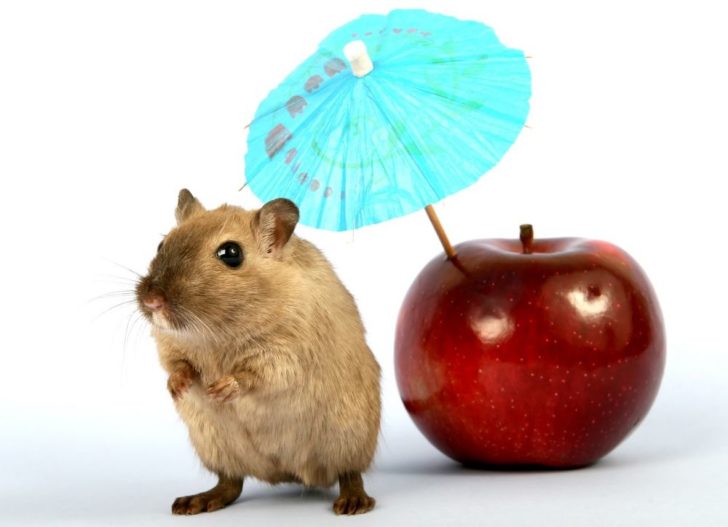Golden Hamster: An In-depth Look at the Beloved Pet

Introduction:
Golden hamsters, scientifically known as Mesocricetus auratus, are adorable and popular pets that have captured the hearts of many people worldwide. Originating from Syria, these small rodents have become an indelible part of household families. This article aims to provide a comprehensive overview, detailed information, and quantitative measurements about golden hamsters, including their types, popularity, and key differences. Additionally, we will delve into the historical aspects, exploring the advantages and disadvantages of various golden hamster breeds.
I. Overview of Golden Hamster:

Golden hamsters are small, furry mammals native to the arid regions of Syria. They are characterized by their golden and dense fur, round bodies, and small, nearly hairless tails. These adorable creatures have become a common choice for both experienced and first-time pet owners due to their gentle nature and manageable size.
II. Comprehensive Presentation of Golden Hamster:
1. Types of Golden Hamsters:
– Syrian Golden Hamster: Also known as the Teddy Bear or Golden Teddy Bear hamster, this is the most popular and widely recognized breed. They have long, soft fur and are available in various colors, including cream, cinnamon, and black.
– Dwarf Golden Hamsters: These charming hamsters are smaller in size and are further categorized into three types Campbell’s, Winter White, and Roborovski. Each has distinct characteristics, such as the Campbell’s generally having a more docile nature and the Roborovski being incredibly active and agile.
2. Popularity:
Golden hamsters, especially Syrian hamsters, are highly sought after as pets due to their charming appearance and relatively low maintenance needs. Their docile nature and adaptability to various environments have made them perfect companions for pet owners of all ages.
III. Quantitative Measurements of Golden Hamster:
1. Dimensions and Weight:
– Syrian Golden Hamster: On average, Syrian hamsters measure around 6-7 inches (15-18 cm) in length, with males being slightly larger than females. They typically weigh between 120-150 grams.
– Dwarf Golden Hamsters: Campell’s dwarfs have an average body length of 3-4 inches (8-10 cm) and weigh about 50 grams, while Winter White and Roborovski dwarfs are even smaller, measuring around 2-3 inches (5-7 cm) and weighing 30 grams on average.
2. Lifespan:
When properly cared for, golden hamsters can live for 2-3 years, although some have been known to reach up to 4 years in rare cases. Factors that impact their lifespan include diet, exercise, genetics, and overall healthcare.
IV. Discussion on Differences Among Golden Hamsters:
Although all golden hamsters share common characteristics, there are notable differences that set each breed apart. These differences include behavior, size, fur color variations, and individual traits. Syrian hamsters, for example, are generally more solitary and territorial, while Dwarf hamsters are more social and can be housed together under certain circumstances.
V. Historical Overview of Advantages and Disadvantages:
1. Advantages:
– Syrian Golden Hamsters: Due to their larger size, they are easier to handle and interact with. They also thrive in a wider range of temperatures.
– Dwarf Golden Hamsters: They occupy less space, making them ideal for individuals with limited living areas. Additionally, their energetic and playful nature can provide hours of entertainment for their owners.
2. Disadvantages:
– Syrian Golden Hamsters: Their solitary nature can make them less suitable for individuals seeking constant social interaction with their pets.
– Dwarf Golden Hamsters: Being smaller and faster, they may require more care and supervision when handling them to prevent accidental escapes.
Conclusion:
Golden hamsters are remarkable pets that have brought joy and companionship to countless households. Whether you prefer the larger Syrian golden hamster or the smaller and lively dwarf golden hamsters, their unique characteristics and lovable nature make them excellent choices for both experienced and novice pet owners. Understanding the various types, quantitative measurements, and historical aspects of these fascinating creatures is crucial in providing them with the care and attention they deserve.
FAQ
How long do golden hamsters typically live?
What are the advantages and disadvantages of owning a golden hamster?
What are the different types of golden hamsters?
Fler nyheter
Kom igång med valpkurs i Nyköping
Introduction: Golden hamsters, scientifically known as Mesocricetus auratus, are adorable and popular pets that have captured the hearts of many people worldwide. Originating from Syria, these small rodents have become an indelible part of household ...
Veronica Urena
17 april 2024
Kom igång med din bästa vän: Valpkurs i Nyköping
Introduction: Golden hamsters, scientifically known as Mesocricetus auratus, are adorable and popular pets that have captured the hearts of many people worldwide. Originating from Syria, these small rodents have become an indelible part of household ...
Veronica Urena
16 april 2024
Ridning i Stockholm: En väg till äventyr och harmoni
Introduction: Golden hamsters, scientifically known as Mesocricetus auratus, are adorable and popular pets that have captured the hearts of many people worldwide. Originating from Syria, these small rodents have become an indelible part of household ...
Veronica Urena
11 april 2024
Säker och bekväm resa – välj rätt hundbur till bilen
Introduction: Golden hamsters, scientifically known as Mesocricetus auratus, are adorable and popular pets that have captured the hearts of many people worldwide. Originating from Syria, these small rodents have become an indelible part of household ...
Maja Bergman Lindberg
11 mars 2024











